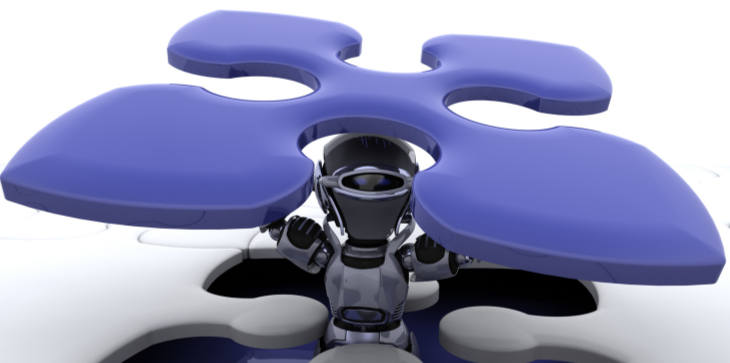3D-Printed Organs – Every day, thousands of patients around the world wait for organ transplants that may never arrive. The gap between supply and demand has long plagued the medical world. But thanks to advancements in bioprinting, this reality could soon change.
The Breakthrough: Bioprinters That Use Living Cells
Unlike traditional 3D printers that use plastic or metal, bioprinters use living cells as their “ink.” Layer by layer, these machines deposit bio-ink to form tissues — and eventually, full organs.
Dr. Adeline Chong, a biomedical engineer at Universiti Malaya, explains the process:
“Imagine a printer, but instead of ink, it uses stem cells. These cells are arranged precisely to mimic natural human tissue. Once printed, the cells grow and fuse into functioning biological structures.”
In 2024, a research team in the United States made headlines after successfully transplanting a 3D-printed mini-liver into an animal model — and it worked. The organ processed toxins and maintained normal function. For the first time, scientists proved that a printed organ could live and function inside a body.
A Glimpse Into Malaysia’s Medical Future
Back home, Malaysia is already stepping into the bioprinting space.
The Institute for Medical Research (IMR) in Kuala Lumpur is working with regional partners to develop printable skin grafts for burn victims. Early trials have shown that these bio-printed skin layers can accelerate healing and reduce infection.
“Malaysia may not be printing hearts just yet,” says Dr. Faizal Nor, a regenerative medicine expert, “but we are building the foundation. Our focus now is on printing simpler structures like cartilage, blood vessels, and skin. Once we perfect that, we move to bigger, more complex organs.”
Why This Matters: A Solution to the Organ Shortage
According to the Malaysian National Transplant Resource Centre, more than 22,000 Malaysians are currently on the waiting list for kidney transplants alone. The number of organ donors remains critically low. Cultural stigma, fear, and lack of awareness contribute to the shortfall.
“Many patients wait for years. Some die before a match is found,” says Dr. Nor. “But if we can print organs on demand — using the patient’s own cells — we solve the shortage and remove the risk of rejection.”
Indeed, 3D bioprinting offers a potential answer to one of healthcare’s most heartbreaking dilemmas: the wait that’s too long.
From Lab to Operating Room: What’s Next?
So, how close are we to printing a heart, a liver, or even a lung?
The reality is this: we’re getting closer, but not quite there.
Researchers have successfully printed organoids — miniature, simplified versions of organs — and tissue patches used for repairing damaged areas. But a fully functional, transplant-ready organ still presents major challenges:
-
Vascularization: Organs need complex networks of blood vessels to stay alive. Creating that network is incredibly difficult to print.
-
Mechanical Function: Organs like the heart not only need structure but also need to beat and pump blood. Achieving that with printed materials is a massive hurdle.
-
Regulatory Approval: Even if the science works, printed organs must undergo rigorous testing before being used in human transplants.
Still, industry leaders are optimistic.
“We might see printed kidneys in clinical trials within five to seven years,” says Dr. Chong. “The momentum is real, and it’s accelerating.”
The Role of AI and Robotics in Bioprinting
One major enabler of 3D-printed organs is Artificial Intelligence (AI). Machine learning models help scientists design complex structures and simulate how printed tissues behave.
Meanwhile, robotic arms with micron-level precision are used in the printing process, ensuring that every cell is placed exactly where it’s needed.
In Penang, a robotics startup called BioNexus Precision is collaborating with university labs to develop robotic bioprinters that can be used in local hospitals. CEO Arif Zulkifli says, “We want Malaysia to be more than just a user of medical innovation. We want to be a builder.”
Will Medical Insurance Cover It?
Another challenge lies in policy and insurance. Bioprinting is costly. A printed organ today can cost tens of thousands of ringgit in lab settings. Who pays for it once it becomes mainstream?
Healthcare providers and insurers will need to develop new frameworks to manage printed organ procedures — including follow-up care, complications, and replacements.
“There’s no point in having amazing tech if patients can’t afford it,” says Dr. Faizal. “Our system must evolve alongside science.”
Hope on the Horizon for Patients
For people like Siti Aminah, a 34-year-old teacher from Johor awaiting a kidney transplant, the idea of 3D-printed organs offers hope.
“I’ve been on dialysis for three years. If they can print a kidney for me one day — even in 10 years — that’s hope I didn’t have before.”
For now, Siti continues her treatment and prays for a donor. But she knows the future might bring a second chance — from a printer.





